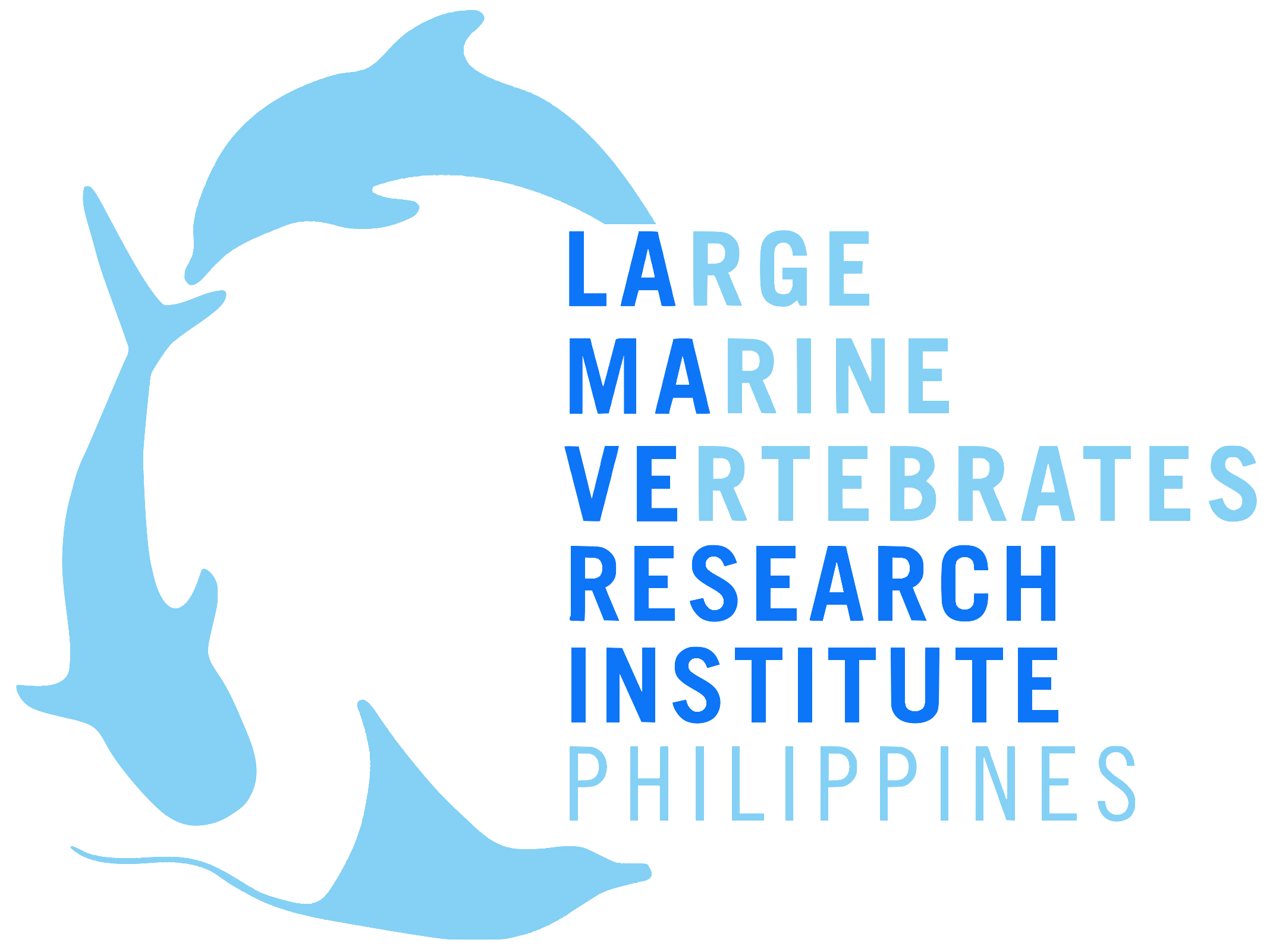PRESS RELEASE
A decade of LAMAVE research shapes IUCN Important Shark and Ray Areas in the Philippines
PUERTO PRINCESA CITY— Ten years of research by the Large Marine Vertebrates Research Institute Philippines (LAMAVE) has supported the delineation of six of the eleven “Important Shark and Ray Areas” (ISRA) identified in the Philippines as part of global efforts to map out critical habitats for sharks, rays, and chimaeras around the world.
The eleven Important Shark and Ray Areas (ISRA) were identified in the Philippines as part of a global initiative led by the International Union for Conservation of Nature Species Survival Commission (IUCN-SSC) Shark Specialist Group in collaboration with local and regional experts.
The areas were preliminarily identified during a regional workshop in January in Bali, Indonesia, which brought together a team of 33 scientists, including 23 experts from throughout the region, and 208 contributors. Ariana Agustines from LAMAVE and AA Yaptinchay of the Marine Wildlife Watch of the Philippines (MWWP) attended. Almost 200 preliminary Areas of Interest (AOI) in Asia were considered, of which 122 were approved as ISRA and 45 as AOI after review by an Independent Review Panel.
The new ISRAs in the Philippines, which span multiple provinces, are Binulbulan Island, Bohol, Danjuagan Island, Honda Bay, Monad and Kimud Shoals, Puerco Island, San Teodoro in Batangas, Sogod Bay, Ticao Burias Pass, Tubbataha Reefs, and East Tun Mustapha, a transboundary area between the Philippines and Malaysia.
LAMAVE’s Research Work has been instrumental in Providing Data and Expertise
A decade of research and conservation work by LAMAVE provided data and expertise to support and map out six of the eleven areas in the Philippines that were identified and approved.
This includes scientific research conducted in Northern Palawan; Honda Bay and Tubbataha Reefs Natural Park in Palawan; the Bohol Sea; Sogod Bay in the Visayas; and the Ticao Burias Pass in Southern Luzon.
The research spread across the Philippines has been recognised for showcasing biodiversity hotspots and confirming the presence and habitat use of various species of sharks and rays including Whale Sharks (Rhincodon typus), Pelagic Thresher Sharks (Alopias pelagicus), Whitetip Reef Shark (Triaenodon obesus), Grey Reef Shark (Carcharhinus amblyrhynchos), Oceanic Manta Rays (Mobula birostris), and Reef Manta Rays (Mobula alfredi). An array of research studies including landing and in-water surveys as well as the use of innovative technology such as Remote Underwater Video Systems (RUVS), Baited Remote Underwater Video Systems (BRUVS), and telemetry has helped identify areas used by these species and habitat use such as reproductive areas, aggregation sites, feeding locations, and migratory pathways.
An array of research studies including landing and in-water surveys as well as the use of innovative technology such as Remote Underwater Video Systems (RUVS), Baited Remote Underwater Video Systems (BRUVS) and telemetry has helped identify areas used by these species. They also gave insights into how these species used these areas for reproduction, aggregation, feeding, and migratory pathways.
An important tool for the development and management of area-based conservation strategies
The newly identified ISRAs are an important tool in guiding the development and management of area-based conservation strategies, including Marine Protected Areas (MPAs), and provide the opportunity to push urgency for direct conservation actions that ensure the survival of these threatened, endangered, and protected species.
While not all the priority areas for the conservation of sharks and rays in the country have been included in this preliminary list, the eleven ISRAs in the Philippines provide biological evidence that can supplement and be integrated with Key Biodiversity Areas (KBAs) and the National Integrated Protected Area System (NIPAS). They can also guide the sustainable management of important marine resources like sharks and rays in the country.
The ISRA Project is an initiative of the IUCN in collaboration with non-profit organisations, government agencies, local stakeholders, and universities that contributed expertise and existing data on sharks and rays from dedicated research and citizen science reports to propose 13 areas in the Philippines, from which 11 were approved as ISRAs.
You can find the full list of approved ISRAs and AOIs in Asia, HERE.
This work has only been possible thanks to the local government units, provincial environment management offices, Palawan Council for Sustainable Development (PCSD), national agencies including the Department of Agriculture - Bureau of Fisheries and Aquatic Resources (DA-BFAR) and the Department of Environment and Natural Resources (DENR), partner NGOs, and local stakeholders.
Notes to Editors:
Large Marine Vertebrates Research Institute Philippines (LAMAVE) is an independent non-profit non-governmental organisation dedicated to the conservation of marine megafauna and their habitats in the Philippines. LAMAVE strives for conservation through scientific research, policy, and education. 2024 marks the 10 year anniversary of the Large Marine Vertebrates Research Institute Philippines which was registered in the Philippines in 2014. For more information, you can visit www.lamave.org and our Facebook, Instagram, and LinkedIn.
Important Shark and Ray Areas Project
The Important Shark and Ray Areas (ISRA) is an initiative led by the IUCN SSC Shark Specialist Group. ISRAs are “discrete, three-dimensional portions of habitat, important for one or more shark, ray, and chimaera species, that are delineated and have the potential to be managed for conservation”. Identifying ISRAs is an evidence-driven, purely biocentric process that applies ad hoc scientific criteria supported by the best available science. The ISRAs’ main purpose is to attract the attention of policymakers and decision-makers on the need to maintain the favourable conservation status of sharks, rays, and chimaeras in species areas by implementing the most appropriate management measures.
You can download a PDF copy of this Press Release, HERE.







